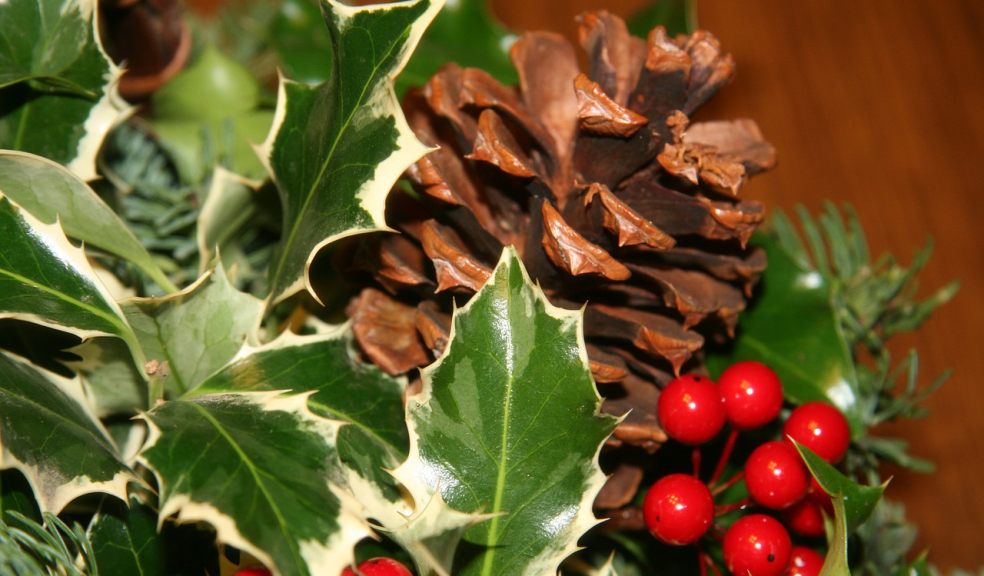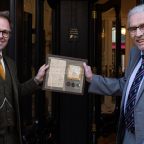
12 ways to ensure your Christmas won’t cost the Earth
As you start to plan your festivities and you purchase your Christmas food and gifts. There are some simple steps we can take to make Christmas more sustainable.
At this time of year, we generate more waste than any other time. One example of this is the amount of cardboard packaging we produce which is approximately 300,000 tonnes, enough to wrap the London Eye 50,000 times according to Recycle Now.
We also need to consider ways we can remove avoidable plastic from our festive preparations. Including Christmas cards, decorations and gifts. Around 12 million tonnes of plastic enters our environment each year that’s equivalent to a bin lorry load every minute.
Below are 12 simple steps to make your Christmas greener.
1. Christmas Tree
If choosing your tree is one of your festive highlights, how do you choose a lovely tree but be as sustainable as possible?
An artificial Christmas trees needs to be used for approximately 10 years for their environmental impact to be lower than a real tree.
Better still, have you considered purchasing a potted tree and then you can plant it outside after the festive season. If you don’t have space to plant it, you could keep it in its pot outside on the patio. This enables you to do your bit for the environment and reuse the tree again next year. It could last a lifetime!
Trees, woods, and forests are vital for tackling the climate emergency. Buying your real Christmas tree from a certified by Grown in Britain supplier will ensure the tree you purchase is from a legal and sustainable UK source.
If you don’t have a potted tree, then make sure you recycle your tree responsibly. Visit your local authority website to find out how to recycle your tree.
2. Christmas Eve Box
Invest in a reusable Christmas Eve box that can be used for many years to come, perhaps even becoming a family heirloom!
You could get creative and make your own reusable box and items to fill it with, you could even make your pet one too.
A great eco-friendly Christmas decoration for years to come.
3. Gifts
Why not give eco gifts to family and friends. Buy a gift with a difference this year.
It could be something like a reusable coffee cup, reusable makeup remover wipes or a solid shampoo bar to encourage a positive behaviour change which will lead to a more sustainable lifestyle.
You could even gift a membership to a charity or wildlife trust, helping to support vital environmental work.
4. Wrapping presents
Use recyclable wrapping paper were possible – if it’s got foil or glitter on it then it can’t be recycled and could contain plastic. Most supermarkets have recyclable options, so try to buy these where possible.
You could use old newspaper to wrap gifts or even recycle last year’s paper.
How about getting creative and using potato stamps to decorate parcel paper and adding a sprig of holly for that Christmas feel.
5. Bows
Instead of adding plastic ribbons to your gifts that will end up in landfill, why not use a more sustainable alternative like a fabric bow that can be kept and re-used to jazz up future gifts.
Look for things you already have and repurpose them to decorate your Christmas gifts.
When fabric bows/ribbons come to the end of their life, dispose of them with other textiles recycling.
6. Cards
We throw away approximately one billion Christmas cards every year. It would take the equivalent of 33 million trees to make that amount of card.
If possible, buy cards printed on FSC-certified, recycled card and are recyclable – plus some cards have detachable items on the front that contain wildflower seeds which can be planted in soil in the new year.
Even better go for the personal touch and make your own from recycled card. Your friends and family will receive unique cards, that have not cost the Earth!
Remember just like wrapping paper, if cards are decorated with glitter or foil, they can’t be recycled.
7. Decorations
Avoid using single use decorations. Why not get crafty and make some homemade decorations instead.
You could use natural resources like pinecones, which you can decorate or make your own natural star using twigs for the top of your tree.
8. Christmas Dinner
When it comes to cooking Christmas dinner and other festive treats, there are some simple yet important ways we can protect the environment.
Try and buy as many items as possible from local suppliers, such as your meat, fruit and veg.
Dairy products are one of the most harmful items poured down the kitchen sink to the environment. It requires a large amount of oxygen to break down, meaning less oxygen in the water for wildlife. This is why pouring milk down the drain is a criminal offence for businesses.
Do not be tempted to tip your leftover dessert custard, creams and yoghurts down the sink. Instead, be conscious of overbuying dairy products.
If you do have dairy leftovers recycle it in your food waste bin. Most councils recycling food waste will accept dairy products as part of their collections and this tends to go to facilities that can generate energy from waste so the throw away produce is going to good use.
9. Christmas Wreath
Wreaths are a beautiful Christmas decoration, but some are more eco-friendly than others. Avoid wreaths adorned with plastic accessories and glittery decorations. Not only are these made using non sustainable materials, but they can be harmful for birds and wildlife if hung outside.
Go for a real, fresh wreath made using seasonal, natural foliage and adornments. Even better, make your own out of either fabric that will last year after year or natural resources from your own garden such as leaves and pinecones.
10. Christmas Crackers
Unfortunately, most Christmas crackers are often laden with glitter that means they’re not recyclable and filled with plastic toys and gifts that are thrown away once the last mouthful of Christmas dinner has been eaten.
Why not make unique Christmas crackers without the environmental cost. Use FSC-certified, recycled paper and check it can be recycled after use. Use recyclable paper ties to tie them. Each cracker could contain a recyclable paper hat and joke and either a wooden Christmas tree decoration or a chocolate in a compostable wrapper. You could reuse a shoe box or something similar to put them in.
If not, there are Christmas crackers available to purchase that use FSC-certified, recycled paper and the items inside are sustainable too.
11. Christmas walk
Instead of a Christmas drive or just dropping down in front of the TV why not go out for a Christmas walk?
Being in a green space has been shown to be good for your physical and mental health. It has become even more apparent especially during the pandemic is the enormous benefit people get from seeking solace in nature.
We can look after ourselves by getting outdoors more, but we need to look after nature too. Make sure you follow the Countryside Code which tells you how to get out and enjoy green spaces while respecting wildlife and other people.
12. Glitz and glam
Did you know that cosmetic and sanitary wipes contribute to 93 per cent of sewer blockages in the UK?
Even when they do not contain plastic, the majority of these wipes do not break down due to the non-woven material they are made of. This prevents them from breaking apart when cleaning surfaces or removing make-up.
Once flushed down the toilet, wipes can get caught in piping and accumulate, congeal with fatbergs, litter beaches and even create large, messy mounds along the banks of riverbeds. If you use make-up remover wipes after Christmas festivities, remember to never flush your wipes!
These small changes make a lot less waste to ensure that this Christmas does not cost the earth!




















